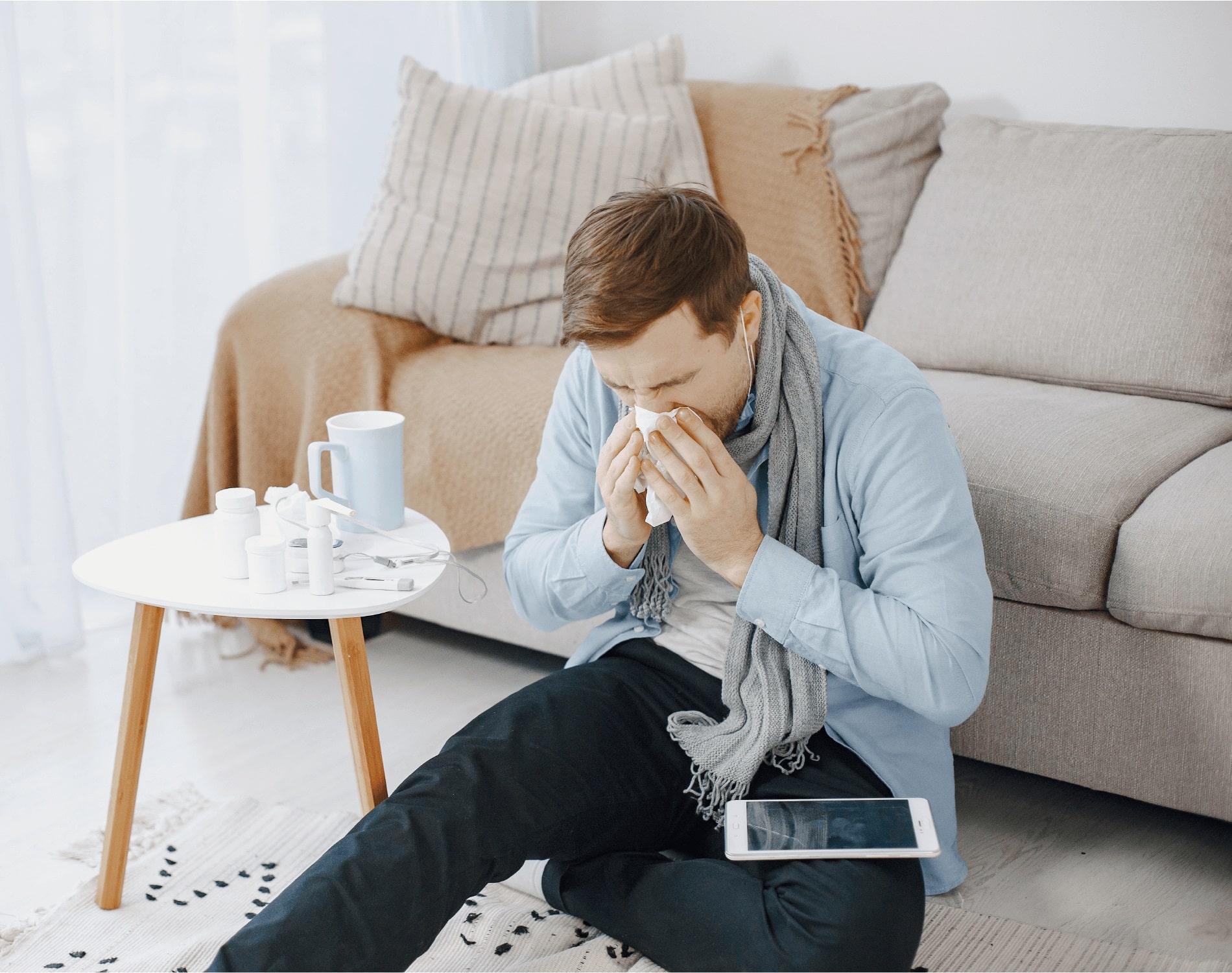
Compared to many countries across the globe, Australia is one of the nations with very high and strict regulations for air quality. Despite this, there are about 5000 deaths each year due to diseases and complications linked with the exposure to air pollution. While many of us perceive air pollution as an outdoor issue, different studies revealed that air pollution indoors exists and can have more fatal effects than outdoor air pollution.
It is generally recognized that Australians spend 90% of time indoors, this large amount of time spent in enclosed locations increases exposure to indoor air pollutants and makes Australian citizens more vulnerable to health problems linked to it.
Common Sources of Poor Indoor Air Quality in Australia
Wood-burning heaters
On average, 10% of Australians use wood as their primary source of heat. Although it is known to bring comfort and warmth, these heaters also contribute to approximately 40% of air pollution in locations like Sydney. They are also the main form of man-made air pollution in the ACT, Melbourne, Tasmania, and other parts of Australia during colder months.
Unflued gas heaters
An unflued gas heater is a heater that burns gas to produce warmth and has no flue, vents, or chimney to carry the combustion products away. Unflued gas heater produces a number of air pollutants including carbon monoxide and nitrogen dioxide. This also generates water vapor that can influence indoor humidity levels and can increase the growth of mold and dust mites.
Bushfires
Bushfires are unplanned vegetation fires. It is a general term that refers to grassland fires, scrub fires, and forest fires – which are all common in Australia. Bushfires produce very high concentrations of smoke and other particles that can cause and aggravate health problems.
Human indoor activities
The number of occupants contribute to poor indoor air quality in buildings. The more people a building has, the higher the concentration of carbon dioxide and other chemicals are produced from breathing, respiration, sweating, and other human activities.
Effects of Poor indoor air quality in Australia
Stale indoor air quality in Australia, when not managed properly can lead to short-term and long-term health effects including:
- Sick Building Syndrome
- Fatigue
- Headache
- Skin rashes
- Eye, nose, and throat irritation
- Kidney failure
- Lung cancer
- Premature birth
- Low birth weight
- Infertility
- Low work productivity
- Weakened focus and concentration
- Increased risk of depression and anxiety
There are indoor air quality guidelines in Australia that are established to manage air pollution and protect people from its unwanted impacts. Two of these are the Work Health and Safety Act and Australia’s National Construction Code.
The Work Health and Safety Act states employers’ obligations to provide a safe working environment for employees, and this includes maintaining better workplace air quality. The Australia’s National Construction Code identifies that CO2 concentrations shall be kept below 850 parts per million. However, some studies found that carbon dioxide levels often exceed recommended standards, particularly in classrooms. In fact, a review in 2017 highlighted that the average and median peak of carbon dioxide in schools across the world were always above 1000 ppm.
Indoor air quality guidelines in Australia may be different from one territory to another, and we recommend checking with particular state regulators for you to have more region-specific data.
Ways to Manage Poor Indoor Air Quality
Ensure proper ventilation – Most schools, commercial spaces, and workplaces are airtight and insulated to keep unconditioned air out. Proper circulation in these places is too little and pollutants like dust, heat, humidity, carbon dioxide, and smoke can accumulate over time.
Maintain cleanliness
A clean indoor space is a place where lesser dust and mold levels are found. To keep your indoor space clean, make sure to conduct regular vacuuming, dusting, and wiping. If your place has curtains and other indoor materials with fabrics and clothing, make sure that they are all washed.
Invest in indoor air quality monitors
Indoor air quality monitors are devices that help built environments discover air quality problems by measuring many different factors affecting it.
uHoo Aura, the most comprehensive indoor air quality monitoring solutions measures 13 different factors, namely: temperature, humidity, carbon dioxide, various particle sizes (PM10, PM4, PM2.5, PM1), carbon monoxide, formaldehyde, VOCs, light, air pressure, and sound. Monitoring indoor air quality allows business owners, building managers, and school administrators to evaluate and modify their indoor environment based on what is required.
An innovative way to resolve Australia’s and the entire world’s most pressing problem, uHoo Aura.

